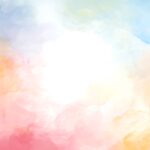Visual appeal isn’t just a nice-to-have in today’s digital world; it’s a must. The tools you choose will have a direct effect on how well your brand can get people to act, whether you’re making an interesting website, a beautiful social media post, or marketing materials. To put it simply, good design doesn’t just interest people; it gets things done.
That’s where your program for making graphics comes in. How well you can make professional, eye-catching pictures that speak to your audience will depend on which features you choose. This guide will break down the most important features that every graphic artist needs to make their work stand out and turn simple designs into assets that get people to buy.
Let’s look at what makes a graphic drawing tool unique.
Core Features of Graphic Design Software
Here are the primary features of a graphic design software:
1. Vector and Raster Graphics Editing
Knowing the differences between vector and raster drawings is crucial in graphic design. This helps you make wise decisions influencing the quality and usability of your visual resources. Both forms of images have advantages and disadvantages and are applied for different purposes.
Vector Graphics Editing
Vector graphics describe their forms, lines, curves, and colours via mathematical equations. This implies users should make modifications to images and save them without losing quality, regardless of their size since they are indifferent about the resolution. Designs requiring flexibility—such as logos, icons, and drawings—must be resized for various purposes—business cards and billboards—especially depending on this scalability.
Vector graphics editing tools let designers exactly alter specific elements of an image. Making adjustments to items like brand colour or icon form is simple. Moreover, vector files are typically smaller than bitmap files, which facilitates storage and sharing of them. Popular formats are SVG (Scalable Vector Graphics) and AI (Adobe Illustrator), which make using both web and print programs simple.
Raster Graphics Editing
On the other hand, raster images consist of a grid of single pixels with individual colour values. Because their pixel-based structure allows one to easily capture those nuances and colour shifts, raster graphics are ideal for images and artwork with lots of minute details. Common file formats for raster images are JPEG, PNG, and TIFF.
Raster images have the largest flaw since their dependability on the resolution. When the pixels in a raster image get larger, a process known as “pixelation” results from which the image loses clarity and quality. This restriction means that the initial resolution of raster images must be carefully considered, particularly if they will be utilised in programs requiring extensive resizing.
2. Collaboration Tools
Design projects aiming for success in the fast-paced digital environment of today depend much on cooperation. Because they enhance communication and simplify procedures, correct collaboration technologies enable teams to work together effortlessly wherever they are situated. Two key elements that help individuals collaborate more readily on graphic design projects are built-in comments and feedback systems and real-time teamwork.
Real-Time Collaboration
Modern graphic design tools increasingly combine with the cloud to enable real-time collaboration. From anywhere around the globe, several people can see and edit a project simultaneously with this function. Real-time teamwork allows designers, clients, and other key players to contribute ideas and make immediate modifications, therefore facilitating the fluid and efficient creative process.
Let’s say that the people on a design team live in different towns or even countries. Real-time collaboration gets rid of the problems that come up when people are far apart. This lets creators come up with ideas, share their thoughts, and make decisions right then. Others on the team can see the changes made by one person right away, so feedback can be given right away and the delays that often happen in traditional design workflows are cut down.
Commenting and Feedback Systems
Integrated comments and feedback systems are very important for making sure that everyone can talk to each other clearly, which is essential for any design project to be successful. People can use these tools to leave comments, questions, and ideas right on the design. This context-rich feedback gets rid of the confusion that comes with email chains or different feedback documents, making sure that comments are clearly linked to specific parts of the design.
For example, a designer could get comments on the colour scheme or font choice of a logo right in the design file. Members of the team can talk about changes in real time, address concerns, and come up with answers without having to hold long meetings. This improved communication not only saves time but also improves the quality of comments because team members can give their thoughts based on visual context instead of just reading written descriptions.
3. Artboard and Canvas Management
Managing your artboard and paper well is a key part of keeping your graphic design projects organised and accurate. The ability to handle multiple artboards and the use of customisable grids and guides are two important features that make this part of the design better.
Multiple Artboards
Designers can now work with more than one artboard in the same project, which is a big deal. This feature makes it possible for users to build, organise, and manage different design elements in a single workspace, which makes work much more efficient. It’s easier to see how different parts of a design will work together when each artboard stands for a different version of the design, a part of a bigger project, or different screen sizes for flexible design.
When making a marketing campaign, for example, a designer can set up different artboards for website banners, email templates, and social media posts. This way, all the assets that go with the campaign can be found in one place. Designers can quickly move between artboards without having to switch between multiple documents. This saves time and lowers the chance of getting lost or confused files.
Customizable Grids and Guides
In graphic design, accuracy is very important, and grids and guides that can be changed are very helpful for getting that level of precision. By giving designers a structured framework, these features make it easy to line up elements, which results in a clean plan that flows well. Grids can be changed to fit the needs of a project, like column layouts for web design or even space for print materials.
Guides make this alignment even better by letting users make reference lines that can be put anywhere on the canvas. This feature is great for making sure that text, pictures, and other design elements are placed correctly, giving the page a professional look and feel. This improves the general layout of designs, making the final products look better and connect with the intended audience.
4. Advanced Editing Tools
When it comes to graphic design, you need advanced editing tools to get the amount of detail and creativity you need for complicated projects. The Pen Tool, Bezier Curves, and Image Tracing are three features that really make a designer’s work better.
Pen Tool and Bezier Curves
The Pen Tool, along with Bezier Curves, is indispensable for creating precise lines and shapes. This tool allows designers to draw paths by placing anchor points that can be adjusted to form intricate designs. The flexibility of Bezier Curves, which enables smooth, flowing lines, empowers designers to create complex shapes that require a high degree of accuracy.
For instance, the ability to precisely control angles and curves guarantees that every piece of a logo or unique artwork reflects the concept of the designer. When generating vector graphics, where exact lines and specified shapes are critical, the Pen Tool’s utility is especially helpful. Mastery of this tool will improve a designer’s output and help them create amazing images unique in a saturated market.
Image Tracing
Another great tool enabling designers to translate raster images into vector drawings is image tracing. Turning images or intricate artwork into scalable vector formats that are easily editable and adjustable is made much easier using this method. Conversion of raster pictures helps designers to be flexible in resizing their visuals without compromising quality, therefore facilitating the integration of several components into their projects.
When working with branding elements or images that must be modified for several purposes—such as print materials or digital platforms—this function is particularly helpful. By cutting the time and effort needed to replicate complex designs from the start, image tracing streamlines the process and frees designers to concentrate on improving their creative vision instead of being mired in technical restrictions.
5. Colour Management
A key component of graphic design, colour management guarantees consistency and quality over several media. Advanced colour correcting tools and support for several colour modes are two key elements for colour management in design software.
Support for Multiple Colour Modes
Working in several colour modes—mostly RGB (Red, Green, Blue) and CMYK (Cyan, Magenta, Yellow, Black)—opens one to effective colour management. Because RGB uses light to produce colours on screens, it is the accepted colour mode for digital designs. On print designs, on which colours are created using ink on paper, CMYK is used.
Designers who wish their work to look fantastic in both digital and print forms must be flexible enough to move between both platforms. For an online campaign, for example, a graphic design must be vivid and appealing on a screen; on a print-on-demand brochure or poster, the same graphic must maintain visual integrity. By enabling both RGB and CMYK, tools help designers to precisely preview and modify their work for the intended media, therefore lowering the chance of colour differences that can produce unacceptable effects.
Color Correction Tools
Apart from supporting several colour modes, sophisticated colour correction techniques are absolutely essential for improving the general image quality. These tools let artists exact changes to colours, saturation, brightness, and contrast, so perfecting their creations.
To more fit the colour palette of the brand, a designer could have to change the saturation of a graphic element or fix the colour balance of a picture. Modern colour correction technologies guarantee that colours are constant and true to the brand’s identity in addition to enhancing the visual attractiveness of designs. Using these instruments will help designers improve image quality so that their images clearly convey the intended message.
6. Mockup and Prototyping Tools
In graphic design, visualisation, and idea testing before actual execution is absolutely vital. Tools for mockup and prototyping help to improve this process by means of interactive prototypes and template library access.
Interactive Prototyping
Interactive prototyping lets designers develop models that replicate the finished product, therefore facilitating real-time testing and comments. Whether a design is a website, mobile app, or product interface, this function is rather helpful in helping one to grasp user interaction with it. Designers may more faithfully depict the user experience by including buttons, transitions, and animations.
Testing these prototypes before finalising designs helps find any problems and lets one make required changes, therefore saving time and money over time. This iterative technique guarantees that everyone is in line with the project vision, therefore improving cooperation with stakeholders and in addition results in more user-friendly designs.
Template Libraries
Another great tool for expeditious design is access to template libraries. For typical projects such as business cards, social media postings, and marketing materials, these libraries offer pre-made designs. Using templates lets designers save time on layout and formatting so they may concentrate on customising and creativity.
Templates also guarantee brand requirements are adhered to by helping to ensure consistency across several projects and platforms. Designers handling several projects or working on strict deadlines would especially benefit from this efficiency since it will help them to generate excellent work quickly and efficiently.
7. Animation and 3D Design
Including dynamic components in designs will help to greatly improve the visual narrative. Features like 3D design tools and animation capabilities let designers add movement and depth, therefore enhancing the interesting quality of their work. This is usually hard to do with 2D graphics.
Animation Capabilities
Animation features in some graphic design software let users generate GIFs or animations. This tool helps creators to include dynamic components in their works, improving communication and grabbing interest. Whether it’s a slow change or a vibrant animation, these features can help to bring still designs alive and more successfully transmit ideas.
Digital marketing especially benefits from animations since striking images can increase interaction rates. Movement allows designers to produce unforgettable experiences that appeal to their target market and increase the whole influence of their work.
3D Design Features
Certain programs provide visual projects an extra degree of depth by including tools for designing 3D models or effects. Features of 3D design let creators create immersive experiences, replicate real-world items, and develop complex models. Industries including product design, architecture, and gaming—where accurate depictions are absolutely vital—need this skill.
Using 3D design tools helps graphic artists explore new dimensions and viewpoints in their work, therefore stretching their creative ability. Being able to see designs in three dimensions improves not only their visual appeal but also helps in clear concept communication to stakeholders and customers.
8. User-Friendly Interfaces
User-friendly interfaces are key to making design tools accessible and efficient, especially for beginners. Features like drag-and-drop functionality and in-program tutorials contribute to a seamless design experience.
Drag-and-Drop Functionality
Many design applications feature intuitive drag-and-drop functionality, simplifying the design process. This user-friendly interface allows designers to easily arrange elements, import assets, and create layouts without extensive technical knowledge. By making design more approachable, this feature empowers users to experiment and explore their creativity.
Drag-and-drop functionality streamlines workflows, enabling designers to focus on their vision rather than getting caught up in complex tools. This accessibility fosters an inclusive environment where individuals of varying skill levels can contribute to the design process.
Tutorials and Guided Edits
For new users to be able to use advanced features well, the program needs to have built-in tutorials and guided changes. These tools give users exact directions so they may learn at their own speed and gain confidence in their abilities. By giving users useful advice, design tools can help them reach their full potential and get the most out of the software.
Furthermore, these guides sometimes include best practices and strategies for design optimisation, which would be quite helpful for both novice and professional designers equally. Investing in user education helps graphic design tools produce a more informed and skilled user population, therefore improving the quality of work produced generally.
Accessing Graphic Design Elements
Pre-made graphic design elements – such as templates, digital art, and photos – can make your process of design even faster with software. DiziShore’s library can help you with those elements from a sea of options, provided directly by the creators themselves. Check out our graphic design collection to start your journey!






